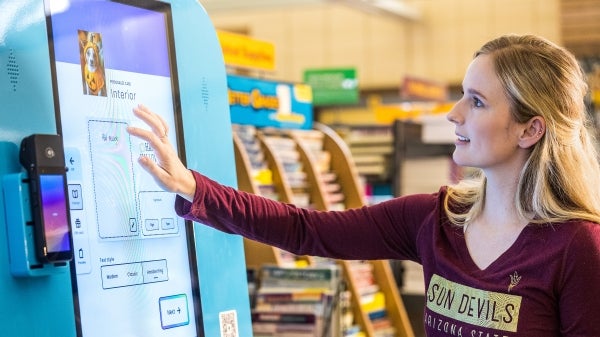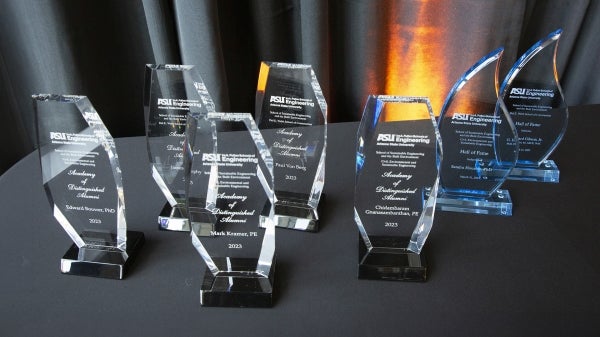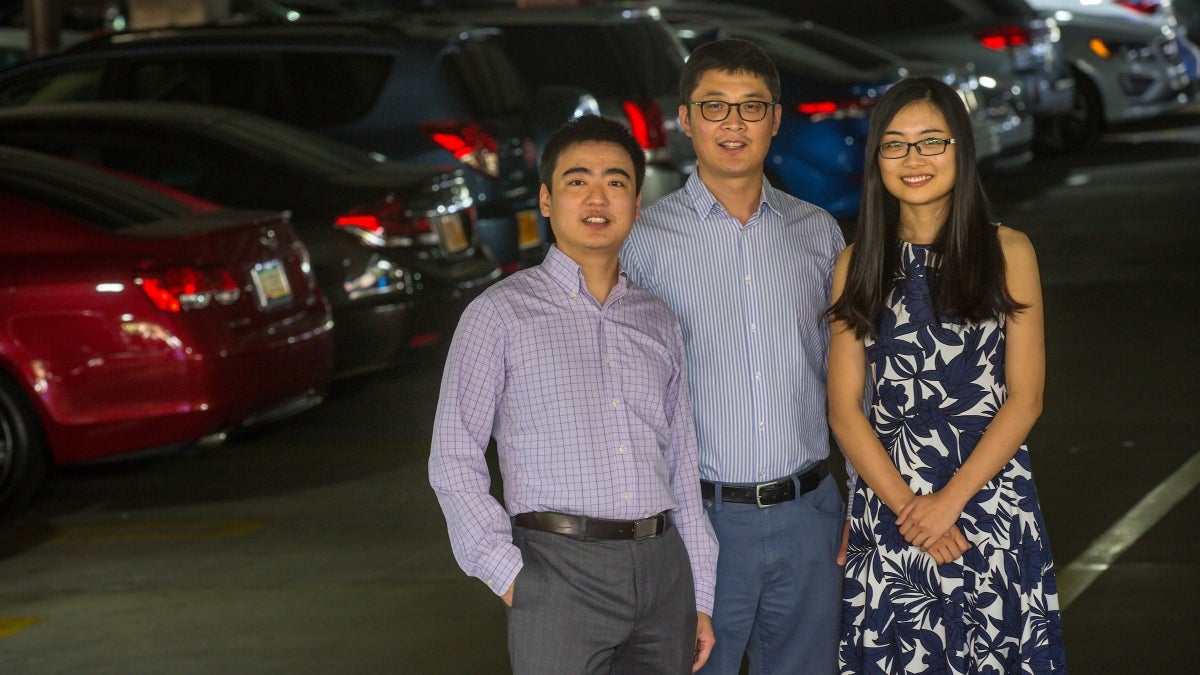Editor's note: This story is being highlighted in ASU Now's year in review. To read more top stories from 2016, click here.
A trio of Arizona State University researchers has quantified the “Uber effect” by completing the first study to prove that when the ride-hailing service enters an urban market, it reduces traffic congestion, cuts travel time and saves gas for all drivers.
The new study, analyzing the largest of several services that allow people to book rides through a smartphone app, puts the value of that savings at more than $1 billion nationwide since 2011, including 66 million hours and 30 million gallons of fuel.
For example, in metro Phoenix, researcher Ziru Li said that translates into about 1.8 million hours that are not spent in traffic jams and more than 900,000 gallons of fuel saved. Together, the time and gas saved are valued at about $43 million since Uber entered the market in 2012.
The study was done by three information systems researchers in ASU’s W. P. Carey School of Business: Yili Hong, an assistant professor; Zhongju Zhang, an associate professor; and Li, who is a doctoral student and research associate. Their work will be presented at several conferences this fall, including the Hawaii International Conference on System Sciences, the Institute for Operations Research and the Management Sciences annual conference and the International Conference on Information Systems annual conference.
“Ride-sharing is a big topic in our discipline,” Hong said. “We study how information technology, which Uber and ride-sharing are a part of, impacts society, and we were intrigued by this big phenomenon.”
Uber and other ride-hailing services such as Lyft — which allow riders to book transportation from drivers who use their personal vehicles — have sparked intense fights over licensing and regulation. Traditional taxi and limousine services have said the ride-hailing firms are avoiding costly requirements. The ride-hailing firms, meanwhile, have said they’re open to regulation.
The services have been suspended or banned in some places, though Uber now operates in more than 400 cities around the world.
Uber, which started in San Francisco in 2011, had no involvement in the study and was selected for research because it’s by far the largest service of its type, the researchers said.
“We were brainstorming good research topics, and we came across a lot of heated debate about the ‘Uber effect,'” particularly in New York City, Zhang said. The team wanted to see what the broader effect was.
Because they wanted to compare traffic before and after Uber, the ASU team had to find out when the service entered a market. They did that by combing through hundreds of news reports, cross-referenced with data on Google searches.
“Basically, in research, we look for statistical significance, and even with the most conservative estimates, we are able to find significant effectsThe team also found that the more types of Uber services that are available in an urban area, the more traffic congestion is lessened.,” Hong said.
The team also controlled for coincidence — that traffic congestion decreased after Uber arrived but not because of it.
“We are using econometric models to establish this causality,” Hong said. “This ride-sharing service really is causing reductions in traffic reductions. It’s not just an association.”
Hong said that the team’s study doesn’t provide direct evidence that more ride-hailing services would cut traffic even further, but their analysis of Google searches might imply that.
This type of study requires big data sets, and the team hopes to work with companies to get access that information.
In the paper, the team discussed reasons why the sharing economy might lessen traffic:
- Uber increases vehicle occupancy. A 2014 study found that ride-sharing cars averaged 1.8 passengers compared with 1.1 in a taxi.
- The ride-hailing app model means that drivers don’t have to cruise the streets looking for passengers.
- People are depending on sharing rather than owning cars. One survey of more than 6,200 households found that sharing replaced nine to 13 owned vehicles.
- Uber increases trip bundling, with passengers doing several things in one trip rather than making several different trips.
- Surge pricing encourages people to use ride sharing at off-peak times so they pay less.
The three researchers said it was important for them to be familiar with ride hailing.
“One of the things we’ve learned throughout the years is that if you want to research something, you better be a user yourself so you can understand it,” Zhang said.
He hopes the study results can inform the debate over ride hailing.
“The argument many cities use to not let Uber enter into the local market is that it can bring negative social issues, such as traffic congestion. We would hope our findings could convince them.”
Top photo: ASU researchers in the W. P. Carey School of Business found that the Uber ride-sharing service reduces traffic in urban areas. They are (from left) Yili Hong, an assistant professor; Zhongju Zhang, an associate professor; and Ziru Li, who is a doctoral student and research associate. Photo by Charlie Leight/ASU Now
For media inquiries, contact Leslie Minton at leslie.minton@asu.edu.
More Business and entrepreneurship

Thunderbird at ASU, W. P. Carey School team up on concurrent master's degrees
Students are now able to take advantage of two world-class schools at Arizona State University, at the same time. The Thunderbird School of Global Management and W. P. Carey School of Business…

ASU alum's personalized greeting card kiosk debuts on Tempe campus
Everyone knows how disheartening it is to dash into a store to grab a last-minute holiday card and find the selection picked over and in disarray.An Arizona State University alumna has created a…

Celebrating industry giants and distinguished alumni
Four outstanding alumni and two industry leaders will be honored at the School of Sustainable Engineering and the Built Environment’s Hall of Fame and Academy of Distinguished Alumni event, scheduled…
